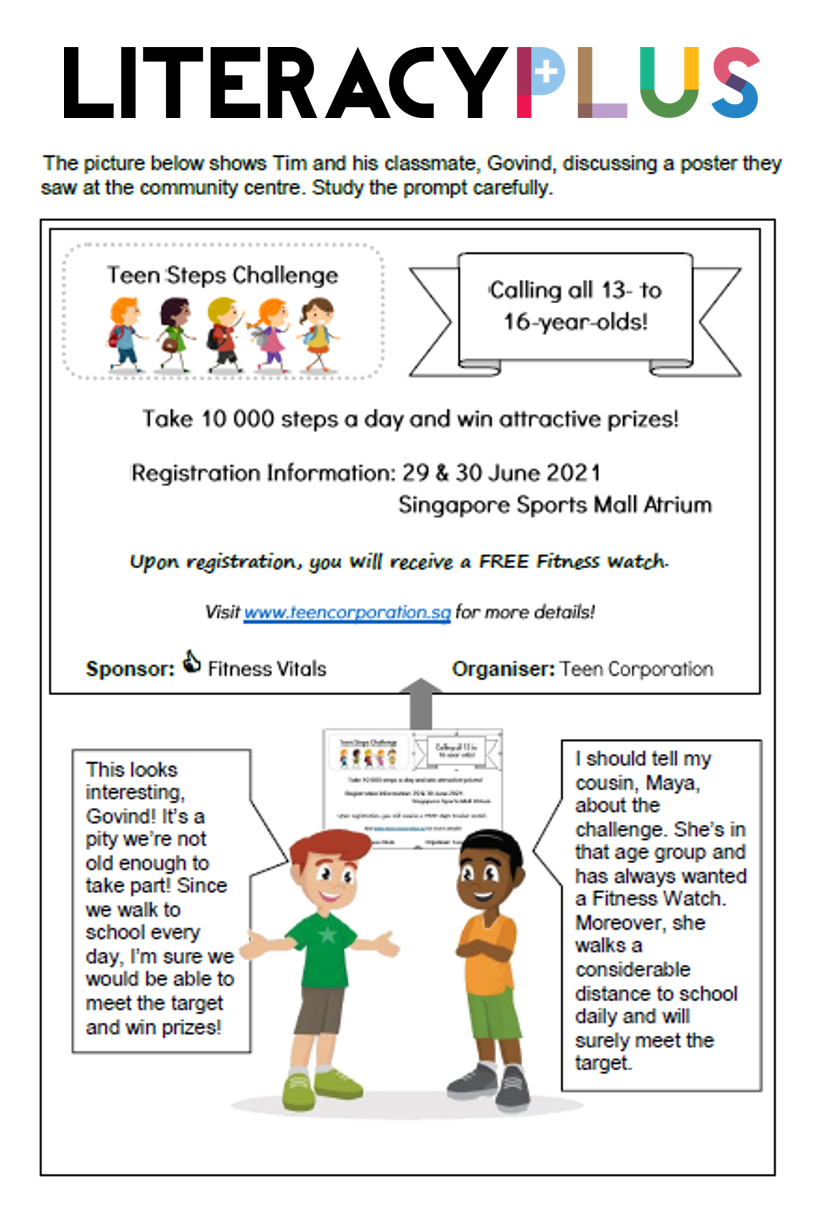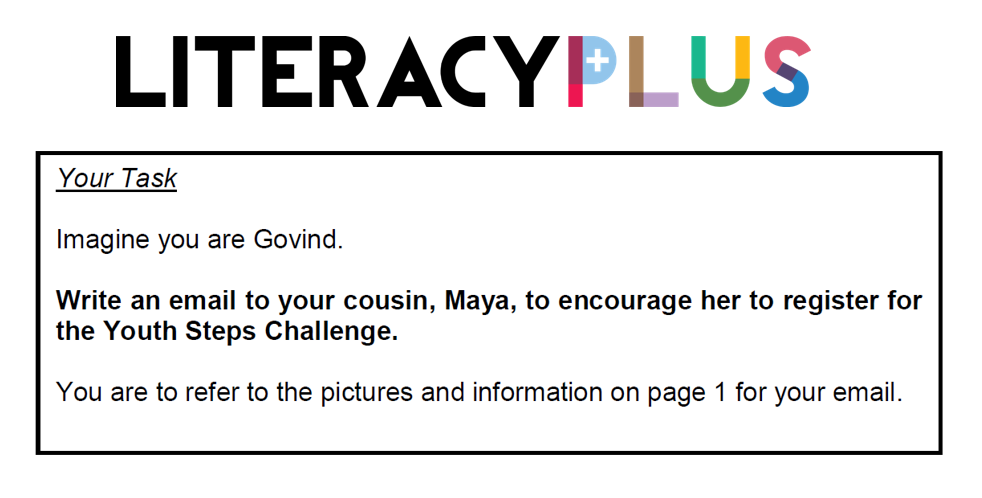In Primary 5, your child will have a new component in English Paper 1: Situational Writing. This component is worth 15 marks, and assesses your child’s ability to create a functional piece of writing—such as a letter, email or report—to address a given situation.
While it is often challenging to secure 40 marks for Continuous Writing, it is actually possible to get full marks for the Situational Writing component, provided your child is able to meet the question’s requirements.
But first, let’s dive into the details of Situational Writing:
This 15-mark component is distributed as such:

What aspects of this task come under the 6 marks for content?
Firstly, your child needs to be able to identify the CAP for this Situational Writing task when examining the question.
-
C – Context
What is the given situation? What is my identity as the writer and what am I going to be writing about?
-
A – Audience
Whom am I writing to? (It could be the public, the school principal, classmates, a company manager, town council, etc.)
-
P – Purpose
Why am I writing this? Am I providing information, making a request, lodging a complaint, or commending someone?
Your child will also need to identify the 6 content points as required by the question. Additionally, he or she needs to determine if a formal or informal tone should be used.
What about the 9 marks for language?
To secure the full 9 marks in the language component, your child needs to remember to write with accurate Grammar, Punctuation and Spelling (GPS). Transition words and phrases should also be used to ensure that all points are smoothly linked.
How much time should my child spend on the Situational Writing component?
Since 1 hour 10 minutes is the time that is allotted for Paper 1, your child should allocate about 15 to 20 minutes to complete the Situational Writing task.
So, this brings us to the question,
how can your child secure the full 15 marks?
1. Look out for all the details
To begin, your child needs to read the stimulus carefully. Every piece of information is vital, and there could also be “hidden clues” in the background (such as the topic of a project written on the white board behind the teacher, or Terms and Conditions of a contest written in small font).

2. Take note of the task box
After scanning the stimulus, most pupils jump to the bullet points right away and miss looking at the task box completely. The task box provides pupils with the CAP information that they need. Can you identify the CAP for this stimulus?

3. Locate the 6 required points
In every stimulus, there are 6 content points, but there may not be 6 bullet points. Your child needs to start by numbering the 6 content requirements of the question. Sometimes, the 6th content point could be hidden in the task box (part of the context).
Click on the image to reveal the answers.
After numbering the 6 points to look for, your child should go back to the stimulus and highlight or underline the relevant pieces of information that correspond to these content points. Go back to the prompt now. Can you identify the 6 points given?
Click on the image to reveal the answers.
4. Use Transition Words and Phrases to link your points
With all this information, your child can get down to writing. However, one way to secure a higher score for the language component is to use transition words and phrases to sequence the points, rather than just listing sentence after sentence.
So what kind of transition words and phrases should your child use?
To show cause and effect:
hence, as a result, therefore, thus
To show sequence/order:
first, second, next, then, finally
To add on points that are similar:
additionally, in addition, moreover, besides
To reflect time:
after that, afterwards, immediately after, subsequently
Write purposefully and creatively with LiteracyPlus
Enrol in our Enhancing English Language Skills (EELS) programme to give your child the opportunity to read critically and write confidently while learning about the world.

About the Author: Miss Vanessa Scully is a Senior Curriculum Specialist and teacher at LiteracyPlus. Having worked with students from preschool to secondary levels, she believes that students learn language best when it is fun and meaningful to them.




